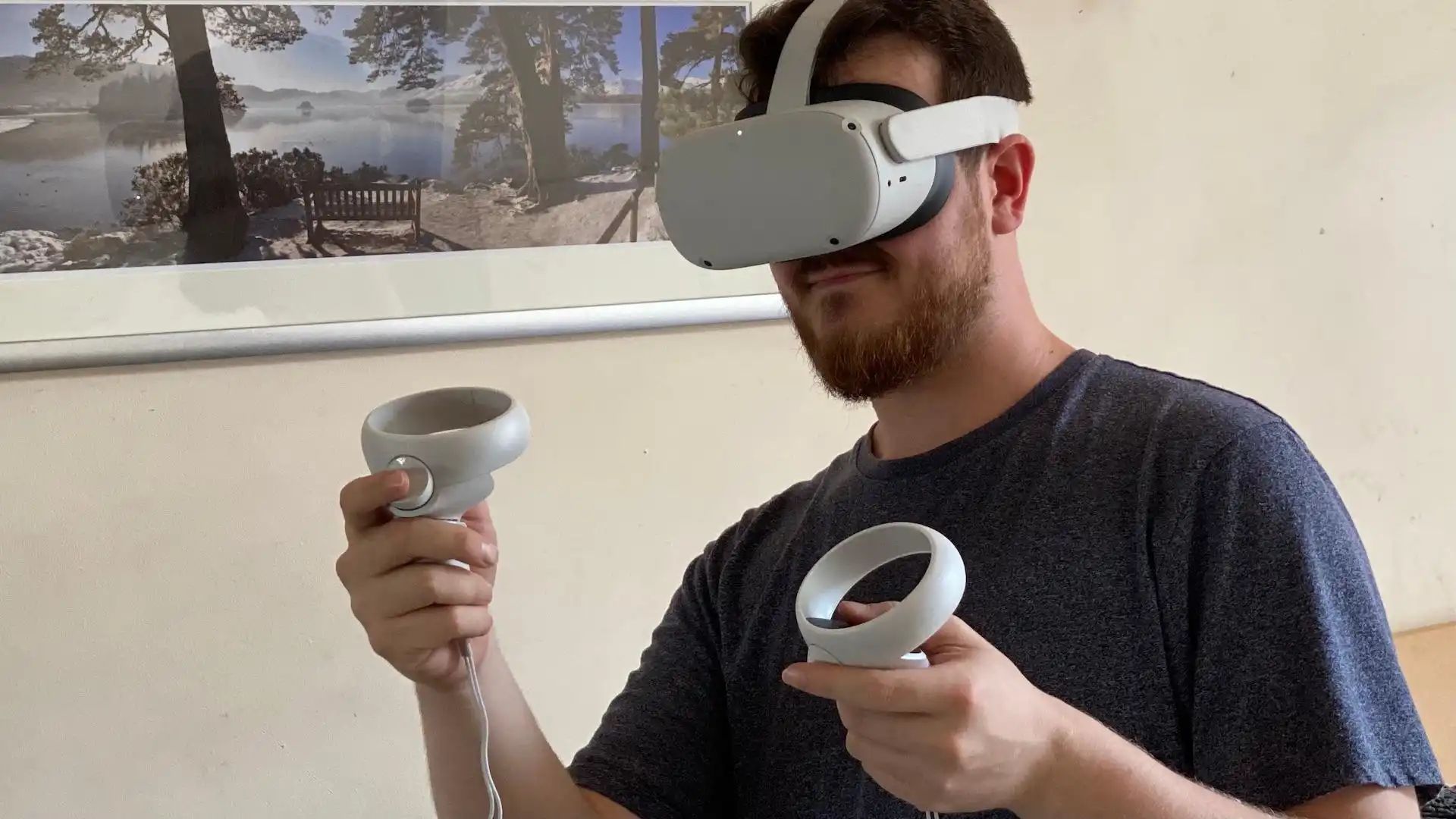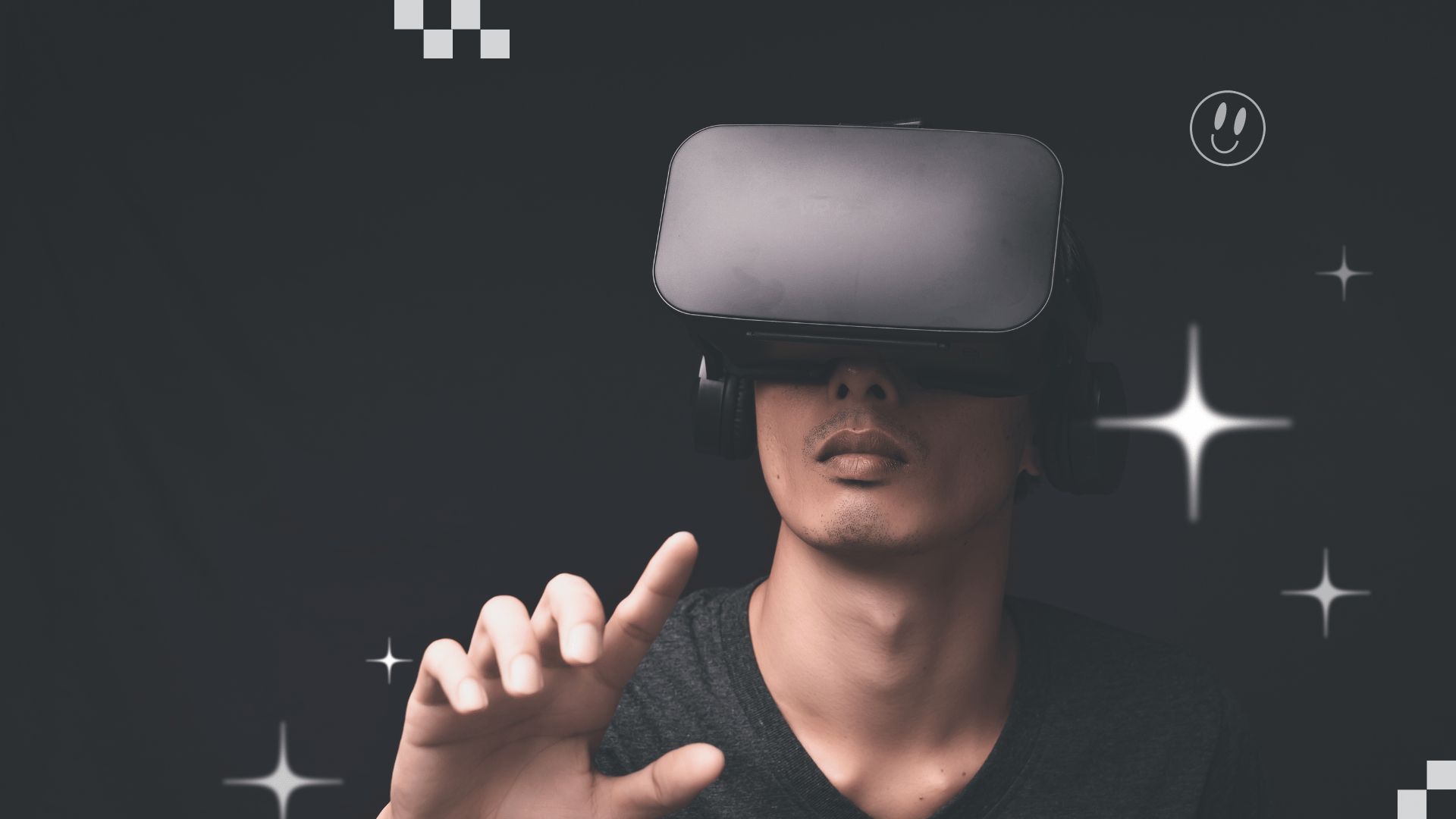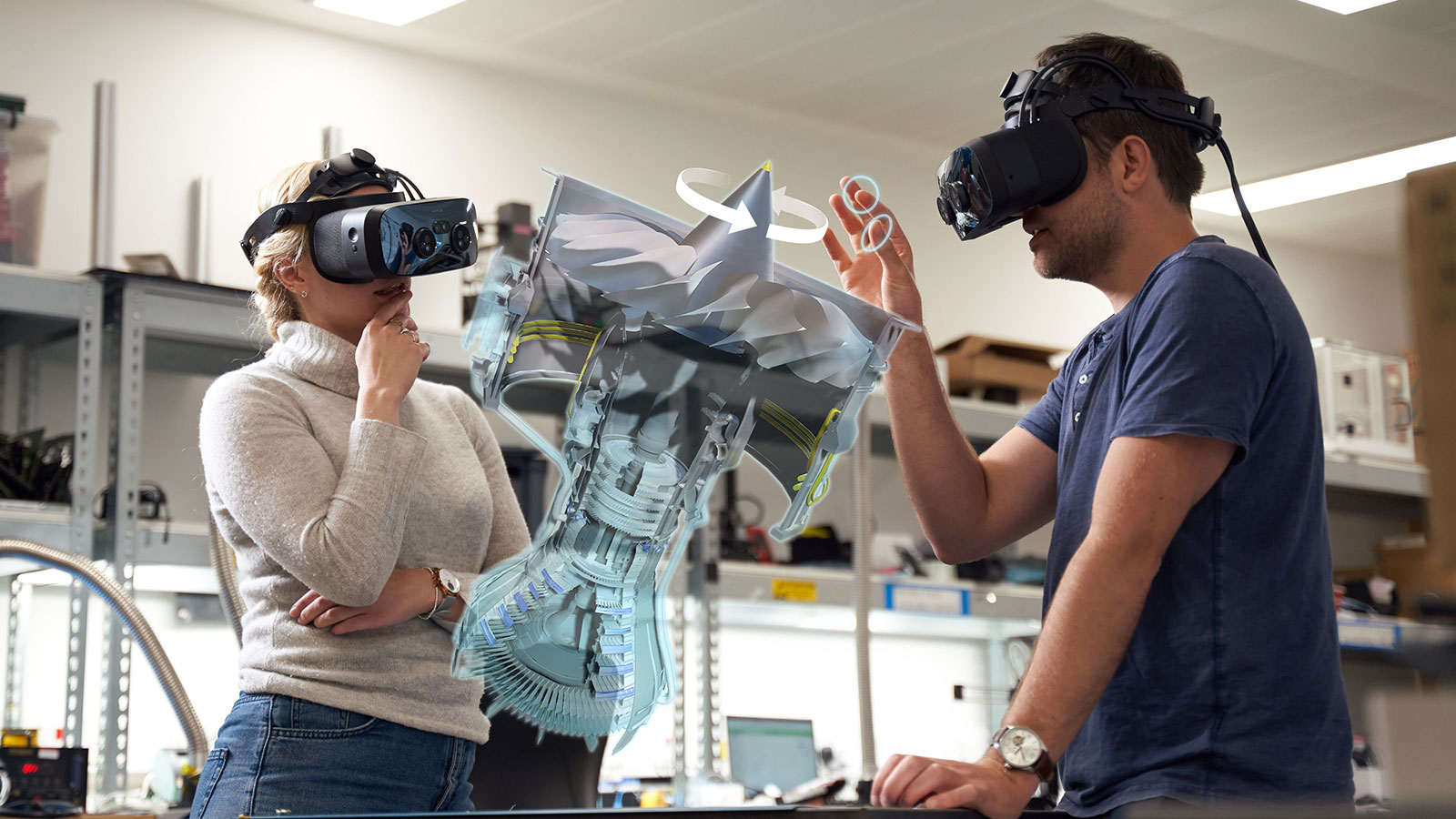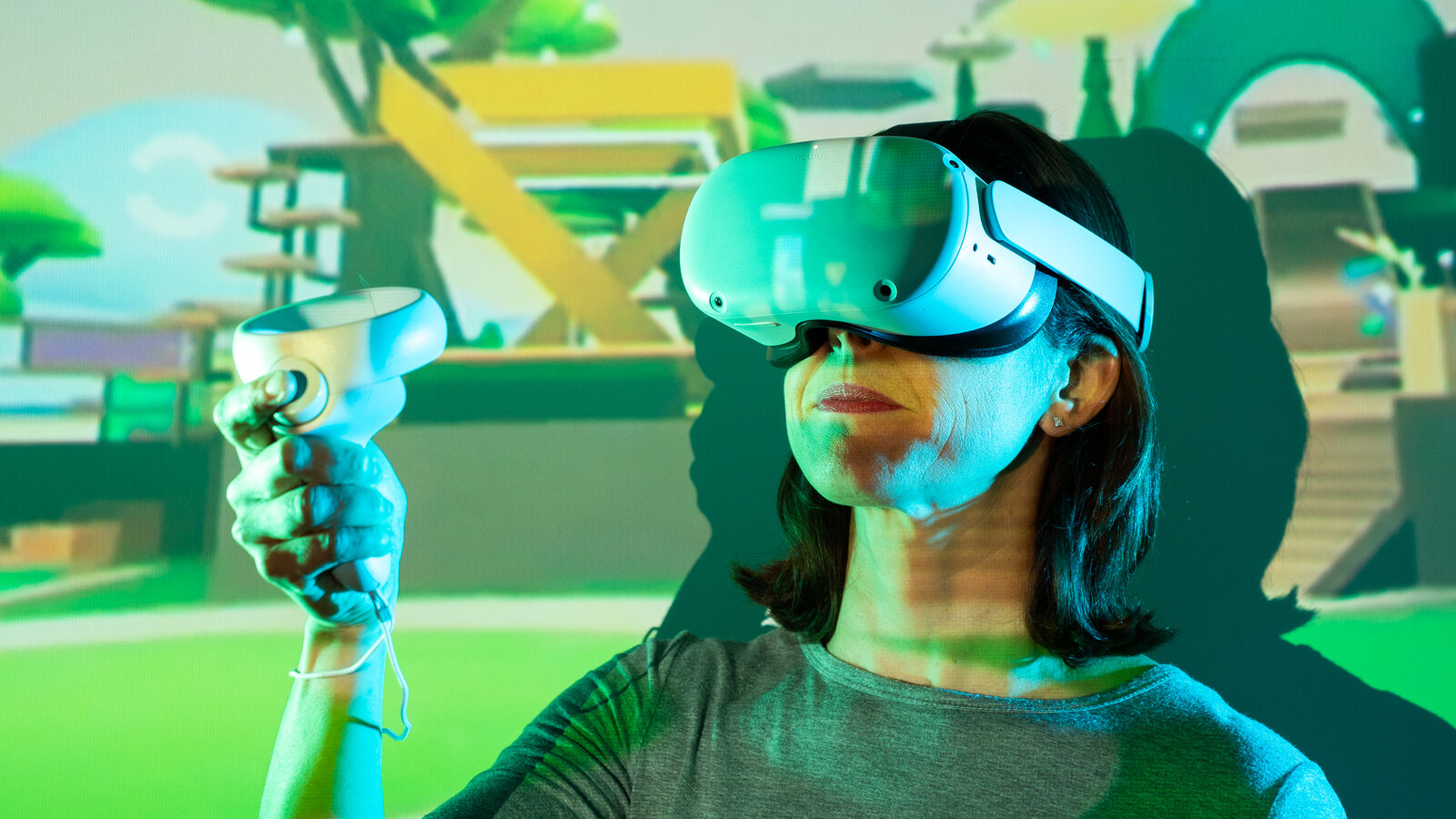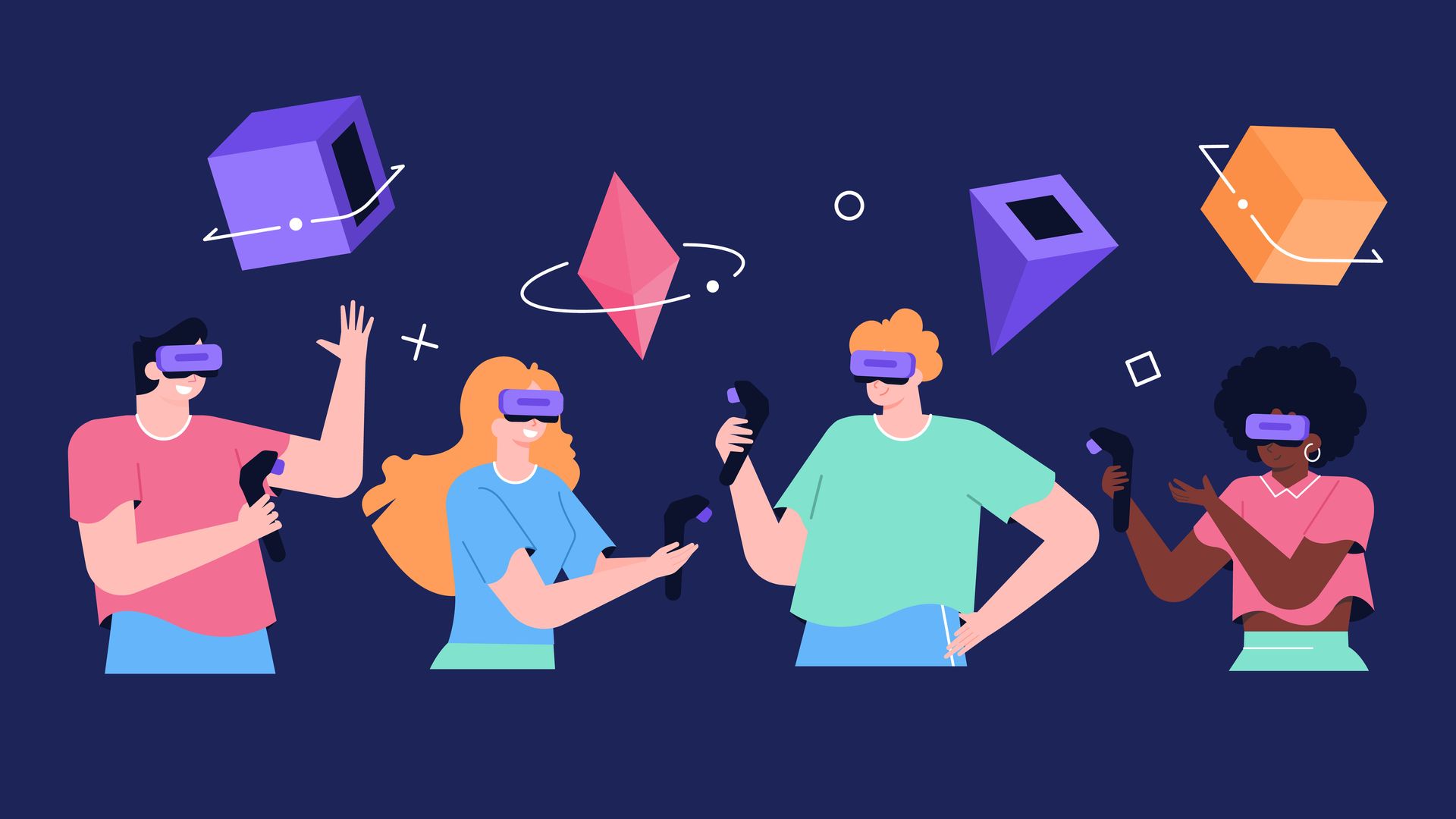Introduction
Welcome to the ever-evolving world of technology and innovation, where the concept of the Metaverse has captured the imagination of many. In recent years, the Metaverse has gained significant attention and become one of the most intriguing and talked-about topics in the tech industry. But what exactly is the Metaverse, and what role do apps play in this virtual realm?
The Metaverse can be described as a virtual universe that encompasses a vast and interconnected network of digital spaces, environments, and experiences. It is a collective term used to represent a shared virtual reality space where individuals can interact with each other and digital objects in real-time. Essentially, the Metaverse is a next-level iteration of the internet, offering a more immersive and interactive experience.
Apps, short for applications, have long been a central part of our digital lives. They range from mobile apps on smartphones to desktop programs on computers, serving a wide range of purposes, from communication and entertainment to productivity and utility. In the context of the Metaverse, apps take on a whole new dimension, playing a crucial role in shaping and enhancing the user experience within this virtual realm.
Metaverse apps are specifically designed to provide users with access to various virtual experiences and functionalities within the Metaverse. They can be thought of as gateways or portals that allow individuals to navigate and explore the different digital realms and engage with other users and virtual objects. These apps serve as the foundation for interaction, communication, and transactions in the Metaverse, enabling seamless connectivity and immersion.
One of the striking characteristics of Metaverse apps is their ability to transcend the boundaries of traditional apps. Unlike traditional apps that are typically limited to specific devices and platforms, Metaverse apps operate in a cross-platform manner, allowing users to seamlessly transition between different devices and environments without losing their progress or data. This cross-platform compatibility is key in creating a cohesive and interconnected Metaverse experience.
Furthermore, Metaverse apps often leverage immersive technologies such as virtual reality (VR) and augmented reality (AR) to provide users with a more engaging and realistic experience. These technologies allow users to step into virtual worlds, interact with virtual objects, and even merge the digital and physical realms. The combination of immersive technologies with powerful computing capabilities opens up new possibilities for creating dynamic and interactive virtual experiences.
In the next sections, we will explore the concept of apps in the Metaverse in more detail and delve into specific examples and criteria for designing Metaverse apps. So buckle up and get ready to dive into the exciting world of the Metaverse!
Definition of the Metaverse
The concept of the Metaverse has been popularized in recent years, but what exactly does it mean? The term “Metaverse” was coined by the science fiction writer Neal Stephenson in his 1992 novel “Snow Crash,” where he described it as a fully immersive virtual reality space that resembles the physical world but exists entirely in the digital realm. While the concept started as a work of fiction, it has now become a tangible goal for technology companies and enthusiasts alike.
In its simplest form, the Metaverse can be understood as a virtual universe where multiple individuals can interact with each other and digital objects in real-time. It goes beyond traditional virtual reality by creating a shared space that is persistent, scalable, and accessible to anyone with an internet connection. The Metaverse aims to break down the barriers between physical and virtual realities, offering a seamless blend of the two.
One of the defining features of the Metaverse is its open-ended nature. Unlike video games or virtual worlds with predefined rules and objectives, the Metaverse is a dynamic and evolving space. It allows users to create, modify, and shape the environment according to their preferences, fostering a sense of ownership and creativity. This aspect sets the Metaverse apart from other virtual experiences, giving users the freedom to explore and express themselves in countless ways.
Another key aspect of the Metaverse is its interconnectedness. Various virtual environments, platforms, and services are connected to form a network of digital spaces. Users can seamlessly travel between different platforms and experiences within the Metaverse, bringing their digital identity and belongings with them. This interconnectedness not only enhances the user experience but also fosters a sense of community and collaboration.
It is important to note that the Metaverse is not limited to a single platform or technology. Instead, it encompasses a wide range of devices, applications, and technologies that come together to create a cohesive virtual experience. From virtual reality headsets and haptic feedback devices to mobile apps and web interfaces, the Metaverse embraces diversity in hardware and software, ensuring accessibility to a wide range of users.
While the concept of the Metaverse is still in its early stages, many technology companies and innovators are actively working towards realizing its full potential. As the Metaverse continues to evolve, we can expect to see new and exciting applications emerge, transforming the way we interact with digital content, socialize with others, and immerse ourselves in virtual experiences. The possibilities are vast, and the journey towards building the Metaverse is just beginning.
Understanding the Concept of Apps in the Metaverse
In the Metaverse, apps play a significant role in shaping and enhancing the user experience. They are not limited to traditional notions of applications but encompass a wide range of functionalities and possibilities. Understanding the concept of apps in the Metaverse is crucial for embracing the full potential of this virtual realm.
Unlike standalone applications in the physical world or even on traditional digital platforms, Metaverse apps are built to seamlessly integrate into the interconnected virtual universe. They provide users with access to various virtual experiences, services, and functionalities, allowing them to navigate, interact, and create within the Metaverse.
Metaverse apps can be broadly categorized into two types: consumer-facing apps and developer-facing apps. Consumer-facing apps are designed for end-users, providing them with direct access to virtual experiences, social interactions, entertainment, commerce, and more. These apps are tailored to offer immersive and engaging experiences, leveraging technologies such as virtual reality, augmented reality, and mixed reality to transport users into virtual worlds.
On the other hand, developer-facing apps cater to the needs of creators, designers, and developers who build and shape the Metaverse. These apps provide the necessary tools, interfaces, and platforms for creating virtual environments, designing virtual objects, scripting interactive elements, and developing social interactions. They empower developers to unleash their creativity and contribute to the growth and evolution of the Metaverse.
One of the fundamental aspects of apps in the Metaverse is their interoperability. This means that different apps can communicate, share data, and interact with each other seamlessly, breaking down the silos that often exist in traditional digital platforms. Interoperability opens up new possibilities for user experiences, enabling cross-app collaboration, integrated social interactions, and fluid transitions between virtual environments.
Furthermore, the Metaverse offers a more immersive and seamless user experience compared to traditional applications. In the Metaverse, users can seamlessly transition between different virtual experiences, platforms, and devices without losing their progress or data. This continuity allows for a more immersive and consistent user journey, regardless of the virtual world or app being accessed.
As the Metaverse continues to evolve, the concept of apps within it is not limited to software alone. It extends to the integration of physical objects and devices, virtual currencies, blockchain technology, and more. The Metaverse apps of the future will be designed to enable seamless interactions between the physical and virtual worlds, blurring the boundaries between the two.
Overall, understanding the concept of apps in the Metaverse is crucial for both end-users and developers. It offers a glimpse into the capabilities and potential of this virtual realm, highlighting the transformative possibilities that lie ahead. By embracing the concept of Metaverse apps, we can collectively shape this immersive, interconnected digital universe and unlock a new era of experiences.
Characteristics of Metaverse Apps
Metaverse apps are not your typical applications found in the physical world or even within traditional digital platforms. They possess unique characteristics that make them essential components of the immersive and interconnected Metaverse. Understanding these characteristics is key to harnessing the full potential of Metaverse apps.
1. Immersive Experiences: Metaverse apps aim to provide users with immersive and interactive experiences. They leverage technologies such as virtual reality (VR), augmented reality (AR), and mixed reality (MR) to transport users into virtual worlds and allow them to interact with digital objects and other users in a more engaging and realistic manner.
2. Interconnectivity: Interconnectivity is a hallmark feature of Metaverse apps. They are designed to seamlessly integrate into the larger Metaverse ecosystem, allowing for cross-platform compatibility and smooth transitions between different virtual experiences. This interconnectedness fosters a sense of continuity and enables users to explore various virtual environments without constraints.
3. Shared Real-Time Interaction: Metaverse apps enable real-time interaction and communication between users within the virtual realm. Whether it’s chatting with friends, engaging in group activities, or collaborating on creative projects, Metaverse apps facilitate social interactions that mirror the spontaneity and dynamics of the physical world.
4. User-Generated Content: Metaverse apps often encourage and empower users to create and contribute their own content. Whether it’s designing virtual objects, developing virtual environments, or scripting interactive elements, Metaverse apps provide the tools and platforms for users to unleash their creativity and make unique contributions to the Metaverse.
5. Openness and Interoperability: Metaverse apps are built around the principles of openness and interoperability. They support the seamless flow of data, assets, and interactions between different apps and platforms, fostering collaboration and enabling cross-app functionality. This openness allows for dynamic and diverse user experiences within the Metaverse.
6. Economic Opportunities: Metaverse apps often incorporate economic systems and virtual currencies. They provide opportunities for users to monetize their creations, engage in virtual commerce, and participate in virtual economies. This creates new avenues for entrepreneurship, virtual asset ownership, and economic growth within the Metaverse ecosystem.
7. Continuous Development and Evolution: Metaverse apps are not static entities but rather participate in a continuous cycle of development and evolution. As the Metaverse evolves, apps need to adapt and iterate to meet the changing needs and expectations of users. Continuous development ensures that Metaverse apps stay relevant and continue to deliver compelling experiences.
In summary, the characteristics of Metaverse apps encompass immersive experiences, interconnectivity, shared real-time interaction, user-generated content, openness and interoperability, economic opportunities, and continuous development. These characteristics collectively contribute to the vibrant and dynamic nature of the Metaverse, offering users endless possibilities for exploration, creation, and social interaction.
Examples of Metaverse Apps
The concept of the Metaverse is rapidly gaining traction, and several innovative apps have emerged to provide users with immersive experiences within this virtual realm. Let’s explore some notable examples of Metaverse apps that showcase the diverse range of possibilities within this digital universe.
1. Roblox: Roblox is a popular Metaverse platform that allows users to create, play, and interact in a variety of virtual experiences. With a robust set of development tools, users can design their own games, virtual worlds, and even monetize their creations. Roblox has a thriving community and offers a wide range of gameplay experiences, from social hangouts to adventurous quests.
2. Decentraland: Decentraland is a decentralized virtual reality platform built on blockchain technology. It enables users to own, build, and monetize virtual land and assets within the Metaverse. Users can create and share their own virtual experiences, attend events, and participate in the platform’s economy. Decentraland puts the power in the hands of its users, allowing for a truly decentralized and user-driven Metaverse.
3. VRChat: VRChat provides a social VR platform where users can create custom avatars, explore virtual worlds, and interact with others in real-time. The app supports both virtual reality and desktop modes, enabling users to connect regardless of their hardware setup. VRChat is known for its vibrant community and wide range of user-generated content, making it a popular destination for socializing and immersive shared experiences.
4. Rec Room: Rec Room offers a multi-platform social VR experience that combines games, activities, and virtual hangouts. Users can participate in various mini-games, join virtual events, and create their own custom rooms and activities. Rec Room encourages social interaction and collaboration, making it a favorite choice for virtual gatherings among friends and communities.
5. Cryptovoxels: Cryptovoxels is a virtual world built on blockchain technology, enabling users to create, own, and trade virtual land and assets. It offers a voxel-based environment where users can build and customize their digital spaces using a simple editor. Cryptovoxels integrates with blockchain systems, allowing for true ownership and scarcity of virtual assets, creating an economy-driven virtual world.
6. Minecraft: While not specifically developed as a Metaverse app, Minecraft holds Metaverse-like qualities due to its expansive nature and persistent virtual world. Users can create and explore infinitely procedurally generated worlds, participate in multiplayer experiences, and customize their gameplay through modding and server communities. Minecraft’s open-ended nature and thriving user base foster a sense of community and collaboration.
These examples represent just a fraction of the vast and ever-growing landscape of Metaverse apps. Each app offers unique experiences, gameplay mechanics, and opportunities for users to connect, create, and immerse themselves in the Metaverse. With the continuous development and innovation in this space, we can expect to see even more exciting and groundbreaking Metaverse apps emerge in the future.
Criteria for App Design in the Metaverse
Designing apps for the Metaverse presents a unique set of challenges and opportunities. To create engaging and successful Metaverse apps, developers must consider several key criteria that are specific to this virtual realm. Let’s explore some of the crucial aspects to keep in mind when designing apps for the Metaverse.
1. Immersive User Experience: A primary focus of Metaverse app design is to provide a highly immersive and engaging user experience. This involves leveraging technologies such as virtual reality (VR), augmented reality (AR), and haptic feedback to create a sense of presence and interactivity. App design should prioritize intuitive user interfaces, smooth interactions, and visually appealing graphics that enhance the user’s immersion within the virtual environment.
2. Seamless Cross-Platform Accessibility: Metaverse apps should be designed to work seamlessly across different devices and platforms, including virtual reality headsets, augmented reality glasses, desktop computers, and mobile devices. Ensuring a consistent user experience and cross-platform compatibility enables users to enjoy the app regardless of their preferred device, empowering them to engage in the Metaverse on their own terms.
3. Social Interaction and Collaboration: Metaverse apps should facilitate social interaction and collaboration among users. Incorporating features such as real-time chat, voice communication, and multiplayer functionality strengthens the sense of community within the Metaverse. Design should also encourage users to join and create communities, fostering collective experiences and the exchange of ideas.
4. Customization and Personalization: Metaverse apps should provide users with the ability to customize their experiences and express their unique identities. This can include options for character customization, virtual space design, and personalization of virtual objects. Allowing users to tailor their virtual presence within the app enhances their sense of ownership and connection to the Metaverse.
5. Interoperability and Data Portability: Metaverse apps should prioritize interoperability, enabling smooth data flow and communication between different apps and platforms. This allows users to seamlessly transition between experiences and carry their progress, virtual assets, and social connections across different apps. Designing with interoperability in mind ensures a connected and cohesive experience within the Metaverse ecosystem.
6. Privacy and Security: Metaverse app design must prioritize user privacy and security. This includes implementing robust security measures to protect users’ personal information, providing clear and transparent privacy policies, and offering controls for users to manage their data within the app. Users should feel confident that their privacy is respected as they engage in the Metaverse.
7. Continuous Updates and Iteration: Designing for the Metaverse is an ongoing process. It is essential to prioritize continuous updates, maintenance, and iteration of the app to keep up with evolving technologies, user expectations, and emerging trends. Regular updates ensure that the app remains relevant, stable, and capable of delivering the latest features and enhancements to users.
By considering these criteria during the app design process, developers can create Metaverse apps that deliver exceptional experiences, foster social connection and collaboration, and contribute to the growth and evolution of the Metaverse ecosystem. The possibilities within the Metaverse are vast, and thoughtful app design plays a vital role in shaping the future of this virtual universe.










